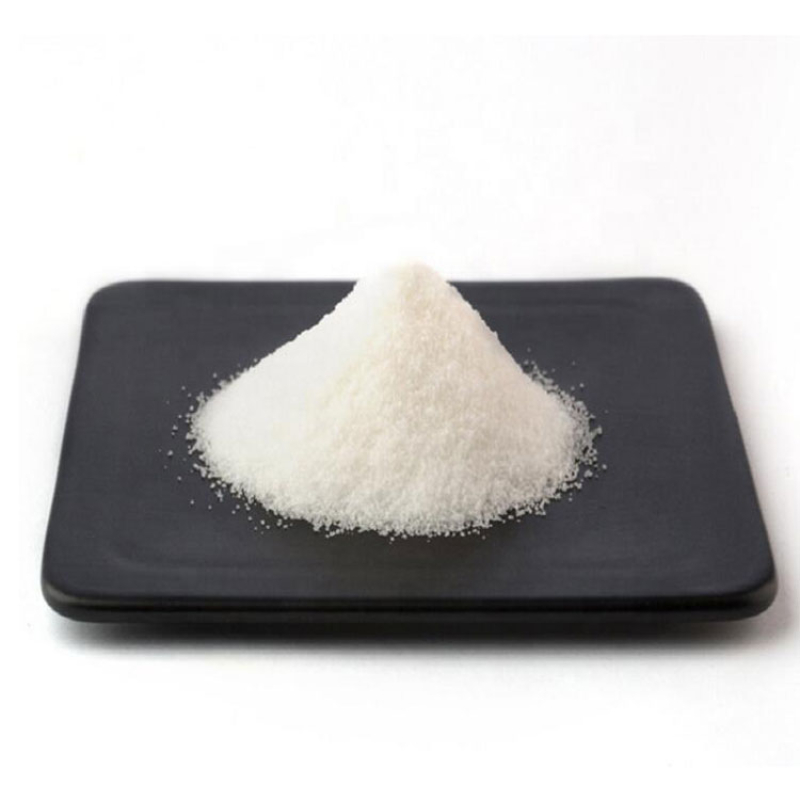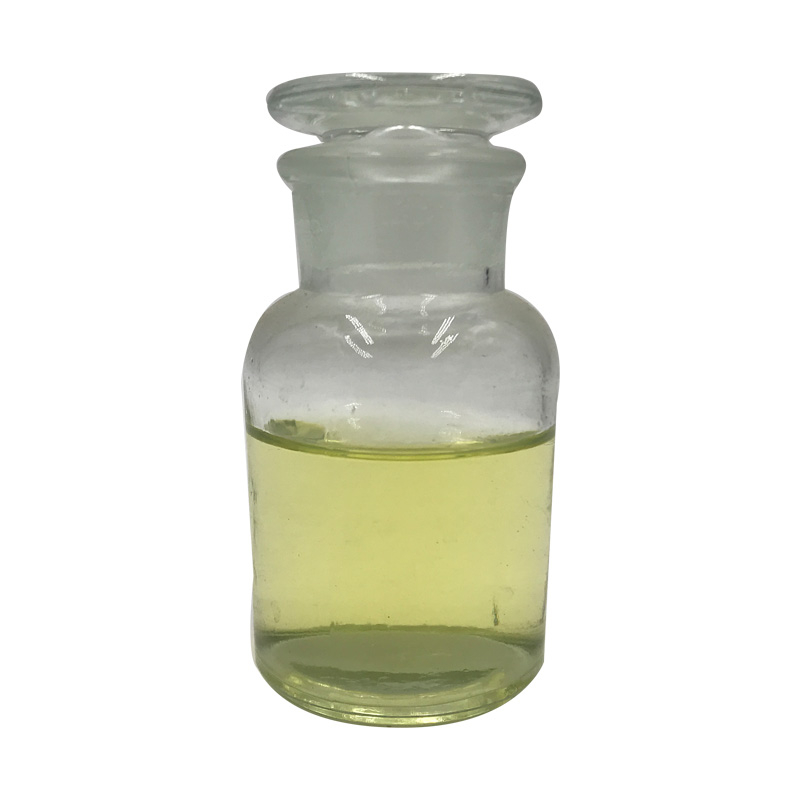Products Description of Tetrabutylammonium iodide CAS#311-28-4Tetrabutylammonium iodide (TBAI) is a commonly used phase transfer catalyst that can increase the reaction rate or effectively promote a variety of chemical reactions. This reagent can be used as an iodine source to generate the iodide required for the reaction in situ, avoiding the use of some unstable and expensive iodides.
Contact Now
Products Description of Tetrabutylammonium Iodide COA#311-28-4Tetrabutylammonium iodide (TBAI) is a commonly used phase transfer catalyst that can increase the reaction rate or effectively promote a variety of chemical reactions. This reagent can be used as an iodine source to generate the iodide required for the reaction in situ, avoiding the use of some unstable and expensive iodides.
Contact Now
Products Description of Cesium Iodide CAS#7789-17-5Cesium iodide, abbreviated as CsI, and inorganic halides including CsI(Tl) are widely used as scintillating media for high-energy particle and ionizing radiation detectors.
Contact Now
Products Description of Tetrabutylammonium hydroxide CAS#2052-49-5Tetrabutylammonium hydroxide is an organic compound with the chemical formula C16H37NO.
Contact Now
Products Description of Tetrabutylammonium hydroxide CAS#2052-49-5Tetrabutylammonium hydroxide is an organic compound with the chemical formula C16H37NO.
Contact Now
Products Description of Tetrabutylammonium bromideCAS#1643-19-2Tetrabutylammonium bromide is a common chemical product on the market.
Contact Now
Products Description of Tetrabutylammonium Perchlorate CAS#1923-70-2Tetrabutylammonium perchlorate is used as a research compound, in medicine, and as an electrolyte in electrochemical gradeTetrabutylammonium perchlorate Chemical PropertiesMelting point 211-215 °Cdensity 1.0387 (rough estimate)refractive index 1.6800 (estimate)solubility acetonitrile: 0.1 g/mL, clear, colorlessform Crystalline Powdercolor WhiteWater Solubility Soluble in acetonitrile and ethanol.
Contact Now
Products Description of Tetrabutylammonium hydrogen sulfate CAS#32503-27-8Tetrabutyl quaternary ammonium salts are phase transfer catalysts with superior performance. Tetrabutylammonium hydrogen sulfate buffer salt system is often used as an aqueous mobile phase in reversed-phase liquid chromatography detection. However, the stability of the tetrabutylammonium hydrogen sulfate buffer salt system gradually decreases with the increase of tetrabutylammonium hydrogen sulfate concentration.
Contact Now
Products Description of Tetrabutylammonium Bromide CAS#1643-19-2 Tetrabutylammonium bromide is a common chemical product on the market.
Contact Now
Products Description of Potassium iodide CAS#7681-11-0 Potassium iodide is an ionic compound, in which iodine ions can form dark yellow precipitated silver iodide with silver ions (decomposed by light and can be used to make high-speed photographic film), so silver nitrate can be used to test the presence of iodine ions. As a component of thyroid hormone, iodine is closely related to the basal metabolism of livestock and poultry, and participates in almost all metabolic processes.
Contact Now
Methyltriphenylphosphonium iodide Chemical PropertiesMelting point 183-185 °C(lit.)storage temp. Keep in dark place,Inert atmosphere,Room temperaturesolubility Chloroform (Slightly), Methanol (Slightly)form Powdercolor White to light yellowWater Solubility SOLUBLESensitive Light Sensitive & HygroscopicInChIInChI=1S/C19H18P.HI/c1-20(17-11-5-2-6-12-17,18-13-7-3-8-14-18)19-15-9-4-10-16-19;/h2-16H,1H3;1H/q+1;/p-1InChIKeyJNMIXMFEVJHFNY-UHFFFAOYSA-MSMILES[P+](C)(C1=CC=CC=C1)(C1=CC=CC=C1)C1=CC=CC=C1.[I-]CAS DataBase Reference2065-66-9(CAS DataBase Reference
Contact Now
Products Description of Iodomethane CAS#74-88-4Methyl iodide is a halogenated hydrocarbon with the molecular formula CH3I, MeI. It is a monoiodine substitute of methane. The boiling point is 42.4℃, the relative density is 2.279 (20/4℃), it is a volatile liquid with high density at room temperature, the dipole moment is 1.59D, and the refractive index is 1.5304 (20°C, D), 1.5293 (21°C, D). Methyl iodide is miscible with common organic solvents, slightly soluble in water, soluble in ethanol and ether. The pure product is colorless and has a special odor.
Contact Now
Products Description of Thiourea CAS#62-56-6Thiourea, English name: Thiourea, white bright bitter crystal, soluble in cold water, ethanol, slightly soluble in ether, easily deliquescent in the air, and transforms into ammonium thiocyanate at 150°C. It has reducing properties and can reduce free iodine to iodide ions. Thiourea is highly reactive and is used to prepare various compounds.
Contact Now
Products Description of Sodium amide CAS#7782-92-5Sodium amide, also known as sodium amide or sodium ammonia, is a white or olive green crystalline powder with an ammonia smell. Its chemical formula is NaNH2, its molecular weight is 39.01, its melting point is 210℃, and its boiling point is 400℃. It decomposes into sodium, nitrogen and hydrogen when heated to 500-600℃. It reacts violently with water to form sodium hydroxide and release ammonia gas. It is slightly soluble in liquid ammonia and reacts slowly with alcohol.
Contact Now
Products Description of Sodium benzoate CAS#532-32-1In 1870, when British scientist H. Fleck was looking for an acid to replace the well-known salicylic acid, he first described the antiseptic effect of benzoic acid. He established the antiseptic effect of this substance. Since the safety research of sodium benzoate was not in-depth at that time and the production technology was not mature enough, it was not used for food preservation until the beginning of this century. Since then, it has become one of the most used preservatives in the world because of its low price.
Contact Now
Products Description of Sodium allylsulfonate CAS#2495-39-8Sodium allylsulfonate, the molecular formula is C3H5SO3Na, and the molecular weight is 144.1.Sodium allylsulfonate Chemical PropertiesMelting point 242 °C (decomp)density 1.206vapor pressure 0Pa at 25℃storage temp. Inert atmosphere,Room Temperaturesolubility soluble in Alcohol, Dimethylformamideform PowderSpecific Gravity1.25color WhiteWater Solubility 4 g/100 mLHydrolytic Sensitivity0: forms stable aqueous solutionsStability:Stable.
Contact Now
Products Description of Sodium Hydroxymethanesulphinate CAS#149-44-0Sodium bisulfite formaldehyde is translucent white orthorhombic crystals or small pieces. Apparent density 1.80~1.85g/cm3. Easily soluble in water, slightly soluble in alcohol. It has extremely strong reducing properties under high temperature and can make the dyed color disappear, so it is known as the chemical book of hanging white blocks. It decomposes when exposed to acid, and decomposes at 120°C to produce toxic gases such as formaldehyde and hydrogen sulfide.
Contact Now
Products Description of Sodium hexafluorophosphate CAS#21324-39-0Sodium hexafluorophosphate is also called "sodium hexafluorophosphate (V) acid". Chemical formula NaPF6·H2O. Molecular weight 185.97. White powder. Sensitive to air and carbon dioxide, relative density 2.36919. Very soluble in water. Decomposes at high temperature.
Contact Now
Products Description of 2,2'-Azobis(2-methylpropionitrile) CAS#78-67-1White columnar crystals or white powdery crystals.
Contact Now
N-B-HYDROXYETHYL OLEYL IMIDAZOLINE CAS#95-38-5It is widely used in the process of oil and natural gas extraction, gathering and transportation, and in the atmospheric and vacuum, catalytic cracking, hydrofining, hydrocracking and other devices of refineries to prevent corrosion of metal equipment.
Contact Now
Ethanol CAS# 71-23-81-propanol is the compound with the hydrogen atom in the propane molecules being changed by way of hydroxyl group. Because the hydroxyl crew can alternative the hydrogen atoms contained in the carbons in the two terminals of carbon chain or center carbon, hence producing two isomers, n-propyl alcohol and isopropyl alcohol.The chemical property of the 1-propanol is comparable to that of ethanol.
Contact Now
Product DetailsProducts Description of Octadecenoic Acid CAS#112-80-1Insoluble in water, soluble in benzene, chloroform, miscible with methanol, ethanol, ether and carbon tetrachloride. Because it contains double bonds, it is easily oxidized by air, producing an unpleasant odor and turning yellow. When treated with nitrogen oxides, nitric acid, mercurous nitrate and sulfurous acid, it can be converted into oleic acid. When hydrogenated, it becomes stearic acid. The double bonds can easily react with halogens to form halogenated stearic acid.
Contact Now
Products Description of Imidazolidinyl urea CAS#39236-46-9White flowing powder, hygroscopic, odorless or with a slight characteristic odor, easily soluble in water, soluble in propylene glycol and glycerin, and hardly soluble in ethanol.Imidazolidinyl urea Chemical PropertiesMelting point 141-143℃Boiling point 514.04°C (rough estimate)density 1.4245 (rough estimate)vapor pressure 0Pa at 25℃refractive index 1.6910 (estimate)storage temp. 2-8°Csolubility Soluble in water and in glycerol, but insoluble in almost all organic solvents.pka7.41±0.10(Predicted)f
Contact Now
Products Description of Guaifenesin CAS#93-14-1Guaifenesin, also known as methyl glyceryl benzene diether, guaifenesin, guaifenesin glycerol ether, and glyceryl guaifenesin, is a stimulating expectorant. After oral administration, it can stimulate the gastric mucosa, reflexively cause increased secretion of bronchial mucosal glands, reduce the viscosity of sputum, and make sticky sputum easier to cough up. It is suitable for treating people with a lot of sputum that is difficult to cough up.
Contact Now


































